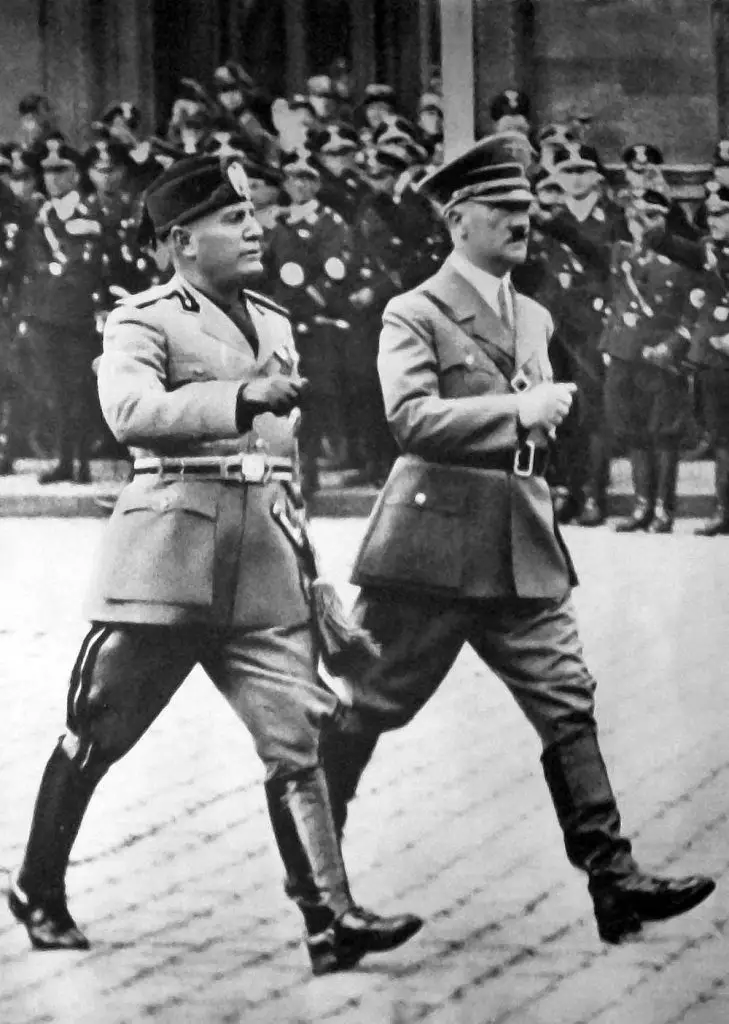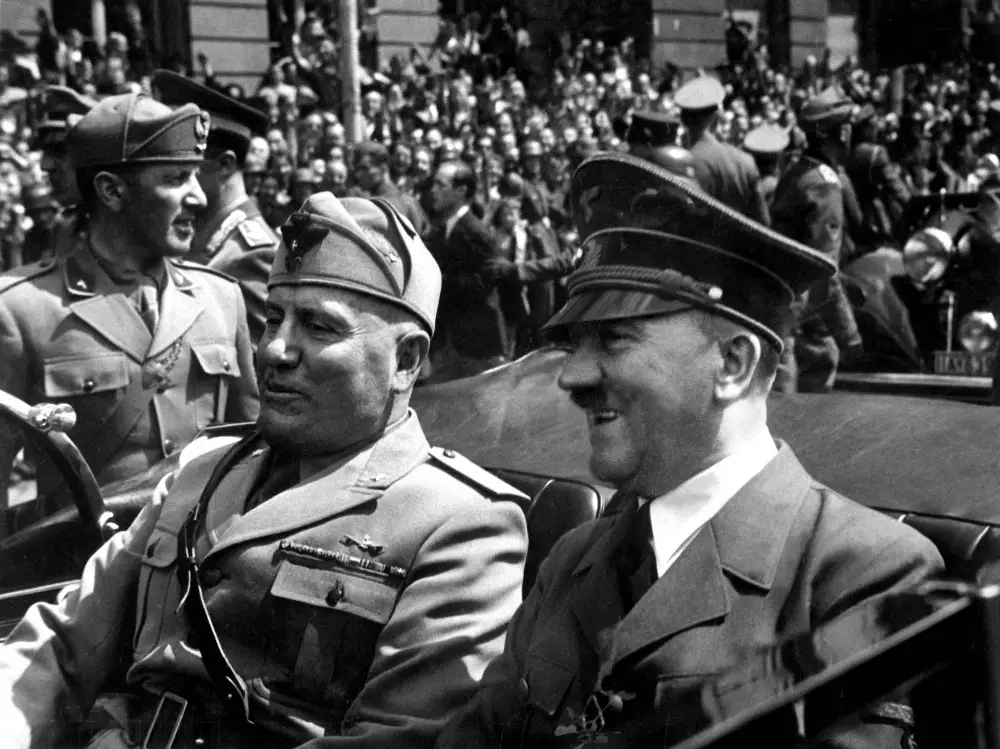 he relationship between Mussolini and Hitler has always been of much interest to scholars and common people. It is known that Nazism was inspired by Fascism, but what kind of relationship did the two dictators have? In this article, I will try to answer this question by reporting four pieces of evidence.
he relationship between Mussolini and Hitler has always been of much interest to scholars and common people. It is known that Nazism was inspired by Fascism, but what kind of relationship did the two dictators have? In this article, I will try to answer this question by reporting four pieces of evidence.

Mussolini was interviewed by Emil Ludwig, a German Jew
In 1932 the German journalist Emil Ludwig interviewed several times Benito Mussolini in order to draft a book on the Italian dictator. Ludwig had already interviewed Josif Stalin in 1931, as he wanted to tell the stories of the men who were ruling Europe at the time. The book would have then been published with the name “Talks with Mussolini”. The content of the book is not that important and reliable, as it was checked by Mussolini and his hierarchs before its publication, but the interviews that made the draft of the book possible were extremely important. Emil Ludwig was a Jew, and as a Jew he had been forced to escape from Germany when Adolf Hitler was about taking power. Mussolini knew Hitler, perhaps not personally, but he certainly was aware of Hitler’s ideas on politics and race. Despite what many people may think, anti-Semitism was not part of the Fascist ideology in the first years of dictatorial regime in Italy. Rather, some Fascist hierarchs were Jew and they were guaranteed all kinds of freedom, at least until the enactment of the Italian Racial Laws in 1938. Mussolini, though, accepted to be interviewed by Ludwig (and not by many others journalist that wanted to interview the Italian dictator) just because he was a German Jew. By doing this, Mussolini intended to send Hitler a message, something like: “I see that Nazism is inspired by Fascism, but anti-Semitism is something that has nothing to do with us”.
Mussolini said: “Racism is blondes’ stuff!”
As an evidence to what you’ve just read, I will now report an anecdote by Indro Montanelli, an Italian (perhaps the most important Italian) journalist. In his book “Io e il Duce”, Montanelli remembers the moment in which he met Mussolini. In 1932 Montanelli and his collogues of the “Universale”, a journal published every fortnight, were summoned at Palazzo Venezia, Mussolini’s residence in Rome. Mussolini was very proud of the quality of that journal. When he was face to face with Montanelli, Mussolini congratulated the young journalist for an article he had published a few days before. That article was about the stupidity of anti-Semitism and the importance of Jews for the Italian economy and labor force. In particular, as Montanelli reported, Mussolini said: “You have my approval: racism is blondes’ stuff!”, clearly referring to the Germans.

Hitler asked Mussolini for an autographed photo
Now, let’s turn to the evidence about Hitler’s love for Mussolini. The first evidence is an anecdote again. We shouldn’t underestimate anecdotes, as sometimes they are more useful than History itself to understand History. Professor Christian Goeschel published a book called “Mussolini and Hitler — a Fatal Friendship” in 2016. The most important thesis of this book is that Mussolini was an inspirational figure for Hitler. Goeschel even revealed the discovery of a correspondence between Mussolini and Hitler that took place a few years before Hitler’s victory in 1933 German Elections. In a letter, Goeschel reported, Hitler asked Mussolini for an autographed photo. Mussolini didn’t answer at first, he did it only in 1931 sending Hitler the photo. We can say that Hitler was a proper fan of the Italian dictator.
Hitler went crazy after Mussolini’s death
The last evidence is Hitler’s reaction to the news of Mussolini’s death. Mussolini was killed in Dongo, Italy, on April 28 1945 and his body was taken to Milan, at Piazzale Loreto, the following night. In Piazzale Loreto, Mussolini’s body was pelted with vegetables, spat at, urinated on, shot at and kicked. As a consequence, Mussolini’s face was disfigured. When the news reached Hitler, the Fürher went crazy. He hated the Italians for what they had done to his only friend. He was sure the Russian would have done the same with him, perhaps after having brought him to the Red Square in Moscow. So, Hitler decided to kill himself in his bunker.
A love-hate relationship
We can finally answer our initial question. The relationship between Mussolini and Hitler was a love-hate relationship, but not in the common sense. It was a love-hate relationship as Hitler loved Mussolini, while Mussolini hated Hitler.

History, Politics & Economics – A place for uncomfortable truths.
michelecaimmi98[at]hotmail.com





